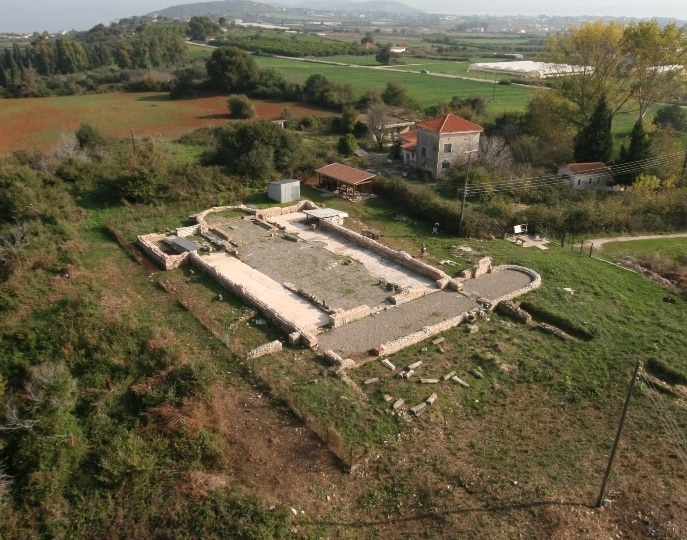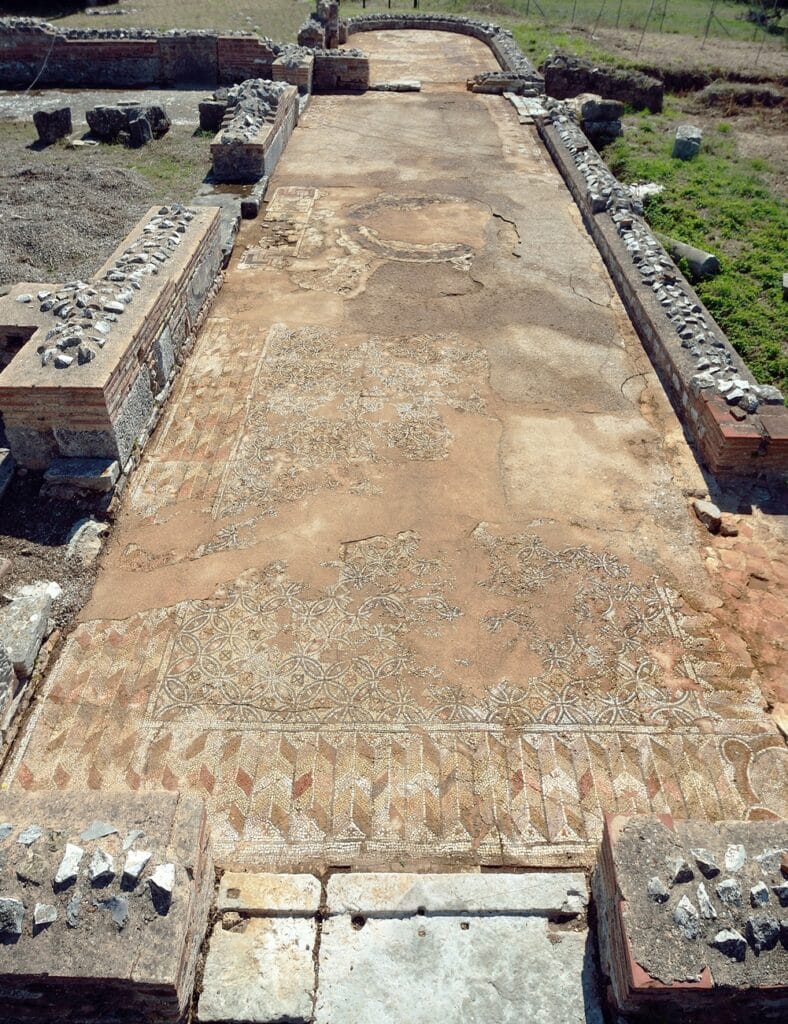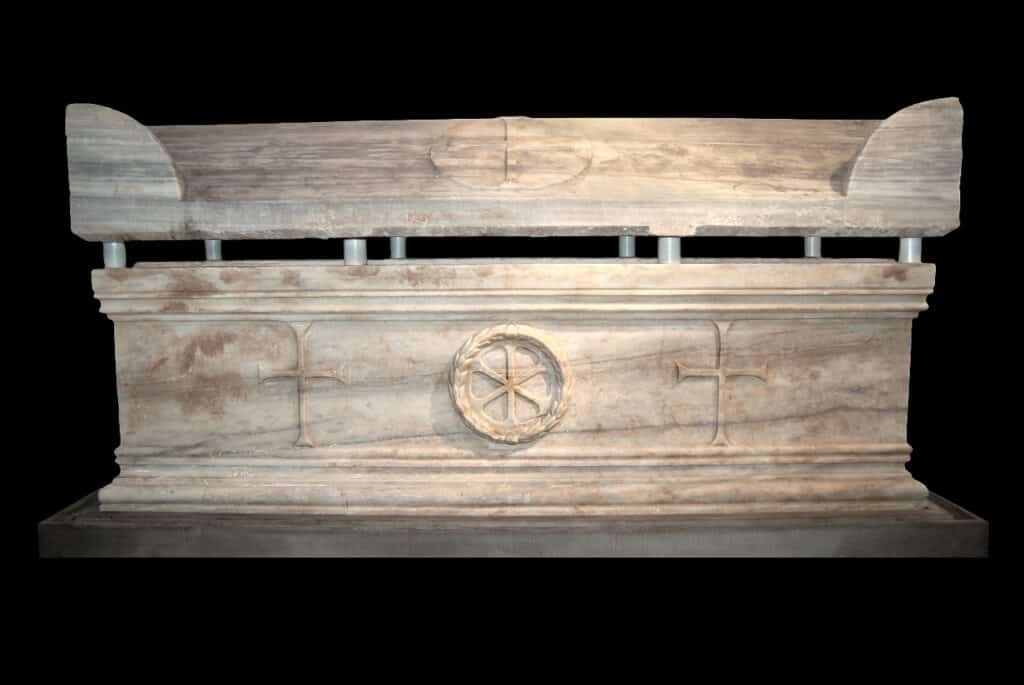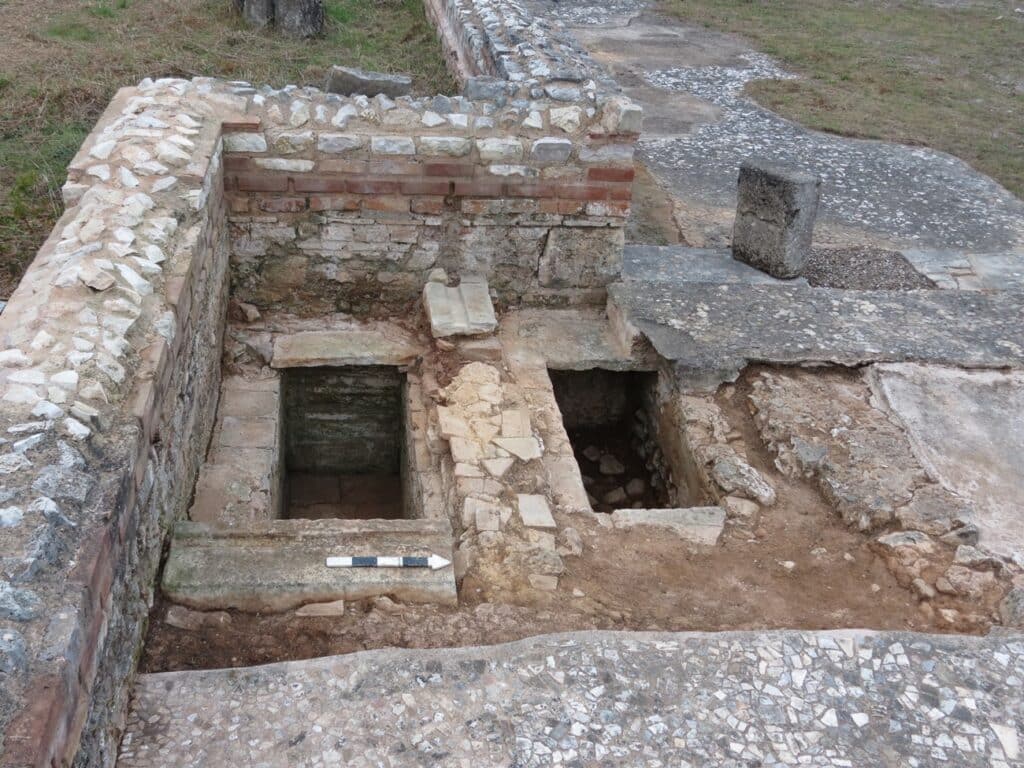Basilica D lay atop the low hill of Karaouli with a view overlooking the Ambracian Gulf, outside the walls of Early Christian Nicopolis but within and near the Roman walls and their southeast gate. It was found in the early 1950s during excavations by the Hellenic Telecommunications Organization (OTE) when a wireless antenna was being installed. Its location outside the Christian city and the burials found inside it led to the conclusion that it must have been associated with one of the Christian cemeteries.
Basilica D was three-aisled and timber-roofed, with a projecting tripartite transept, narthex with annexes, and atrium. The expansion of the north and west walls of the atrium beyond its northwest corner attests to the existence of a portico which apparently ensured the main access to the church from the road.
Two doors at the eastern end of the north and south porticos of the atrium led to the narthex, a small part of whose mosaic floor survives. In the center of the floor among geometric designs, a wreath with colorful flowers and fruits held up by a winding band was depicted. This was an extremely common decorative motif in sculpture, but it was rare in the decoration of mosaic floors, an element indicative of the fine and original artistic quality of works by the Nicopolis mosaic workshop.
A narrow opening in the south wall of the narthex led to a small apartment, probably the diakonikon with an apse on its south side, and a mosaic floor. Three doors in the east wall of the narthex (the widest of which was the central one, the Royal Gate), which originally had luxurious marble frames, led to the nave. Two rows of six Ionic columns which created its three aisles continued into the transept. The floor of the central aisle carried a costly marble inlay (opus sectile) while marble inlaid floors with irregular polychrome tiles (opus segmentatum) are preserved to a notable extent.
The slightly-elevated floor of the bema was decorated with marble inlays similar to that in the central aisle. Only the base of the altar table (Agia Trapeza) is preserved. On either side of it were the built subsellia (συμψέλλια, “lower range”), and further east in the apse was the stepped semicircular stepped pedestal on which the bishop’s throne was placed.
The transept’s two wings communicated with the bema and the side aisles via a double opening on either side of a column (dibelon). In the north apartment, beneath the marble slabs, a marble sarcophagus and built cist tomb containing the bones of at least six individuals was found. Inside the sarcophagus, which was of exceptional artistic quality and came from a sculpture workshop in Constantinople, the dissolved bones of the deceased minus his skull were found. The privileged position of the burial next to the bema in a costly sarcophagus allows us to conclude that the deceased was the martyr to whom the church was dedicated. This hypothesis is supported by the presence of the adjacent tomb, which is interpreted as a burial ad sanctum (a burial beside a martyr), which ensured the salvation of the soul.
There was also a corresponding small apartment, fenced off by closure slabs, in the southwest section of the south apartment, the “makeshift pastophorion” according to Orlandos. Exploration beneath the floor revealed the presence of two cist graves which contained the bones of at least eighteen persons. The discovery of these tombs reinforces the view that corresponding apartments in Early Christian basilicas were also intended for the burial of officials of the clergy and prominent citizens. The interpretation of the basilica as a mortuary church is further supported by the inscribed fragment of a grave stele dating to the Christian period found in the area of the apse by the first excavators.
The basilica’s sculptures are also notable in their entirety. The imported sculptures must have been specially commissioned for this basilica.
The erection of Basilica D is dated to the first half of the 6th century, primarily on the basis of its architectural sculptures and the mosaic floors in its narthex and diakonikon.






